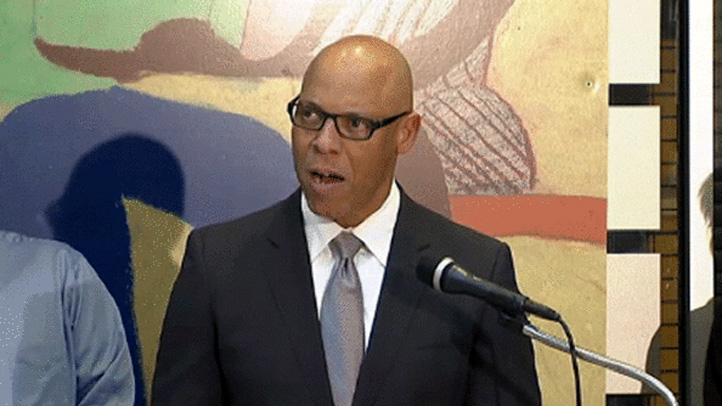A few thousand Philadelphia public school students in kindergarten and first and second grades returned to in-person learning Monday morning, nearly one year after the coronavirus pandemic forced learning in Philadelphia online.
Superintendent William Hite Jr. and Mayor Jim Kenney spoke as young students returned to Juniata Park Academy in the Juniata Park neighborhood Monday.
Parents dropping off their children for the first time this school year called it bittersweet.
Get top local stories in Philly delivered to you every morning. Sign up for NBC Philadelphia's News Headlines newsletter.
Juniata Park is one of the 53 schools in what Hite last week called a plan to "slowly phase in" in-person learning.
“Today was exciting to see some of our youngest learners walk into school,” Hite said Monday. “As we continue to work with the City and Philadelphia Federation of Teachers, I look forward to welcoming more and more students to their school buildings so they can receive the crucial in-person learning that they need.”
The in-person learning is a hybrid model and will reopen classrooms for a portion of the school week. Hite said the exact number of students returning Monday is based on which students at the 53 schools signed up to be the first to return. He estimated it would be about 3,000.
Another 45 elementary schools open for in-person lessons next week.
Kenney said last week the on-and-off-again reopening plans for roughly 9,000 students that played out over the last couple weeks was "very frustrating for parents and other caregivers."
The city teachers' union was the main antagonist in the battle with Hite and his administration over the reopening plan. The number of students is now going to be a third of that initial 9,000 that the district wanted to bring back, Hite said.
There is still a long way to go for the deficit-laden school district to get all students back in classrooms, especially older students. One of the biggest issues is getting proper air ventilation systems in all buildings and classrooms.
Photos of window fans inserted into classrooms that were supposed to be the equipment for air circulation spread quickly on social media ahead of the district's initial reopening date in February. Those photos caused an uproar within the teaching ranks, and caused two postponements of planned reopenings.
In the time during the scuttled reopenings, the city and school administrations prioritized teachers for receiving coronavirus vaccines, which also helped improve relations to the point of getting an agreed-upon return for the 3,000 students.
Hite said the district has put in place a plan to reopen more schools each Monday moving forward, with the hope that all students in kindergarten and first and second grades will return to in-person learning in a hybrid model by the end of March. On Monday, the district announced the next 45 schools that will reopen for in-person classes on March 15.
Both Hite and Kenney hinted Monday that they would like to see the school year extended to give more time to return to in-person classes for more students and make up for lost learning, but that they would need more funding and buy-in from various parties.
A recent NBC10 Investigators report found that the full-virtual learning approach in place in Philadelphia so far this school year has disproportionately hurt students of color.
Philadelphia tracks its attendance by measuring against 95% average attendance, which the district and others consider good attendance. In October 2019, a little more than 77% of white students met the 95% attendance goal. In October 2020, white students had actually improved their attendance to nearly 80%.
In October 2019, about 69% of Black and Hispanic students met the good attendance mark, but those numbers dropped to about 58% and 59%, respectively, in October 2020.
Experts say having an average attendance below 90% can be detrimental – potentially impacting reading level and increasing the chances that students fail classes and don’t graduating high school.
“The impact is going to be pretty, pretty grave when we look at who has been making progress this year and who hasn't,” said Margie Wakelin, an attorney with the Pennsylvania Education Law Center.



